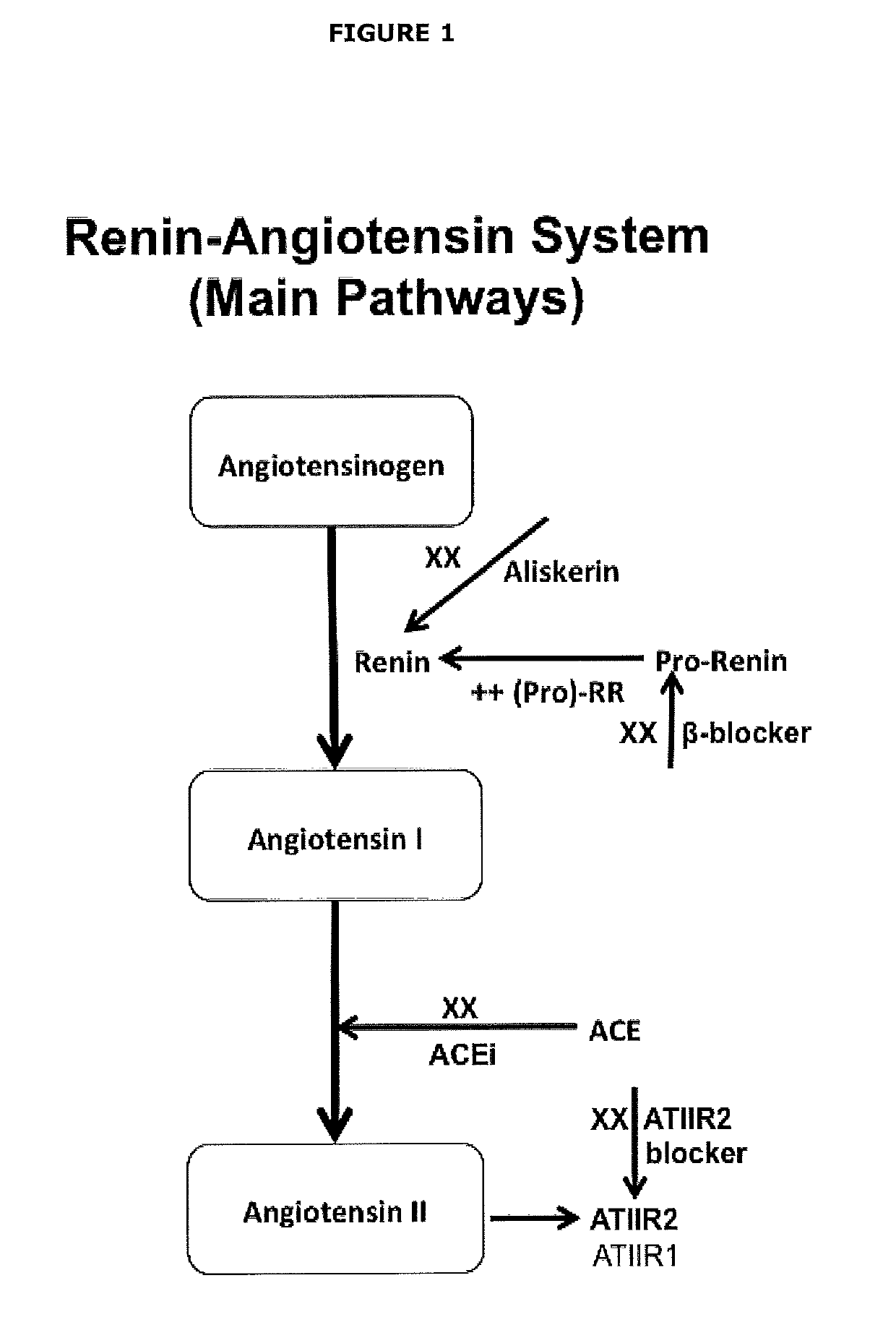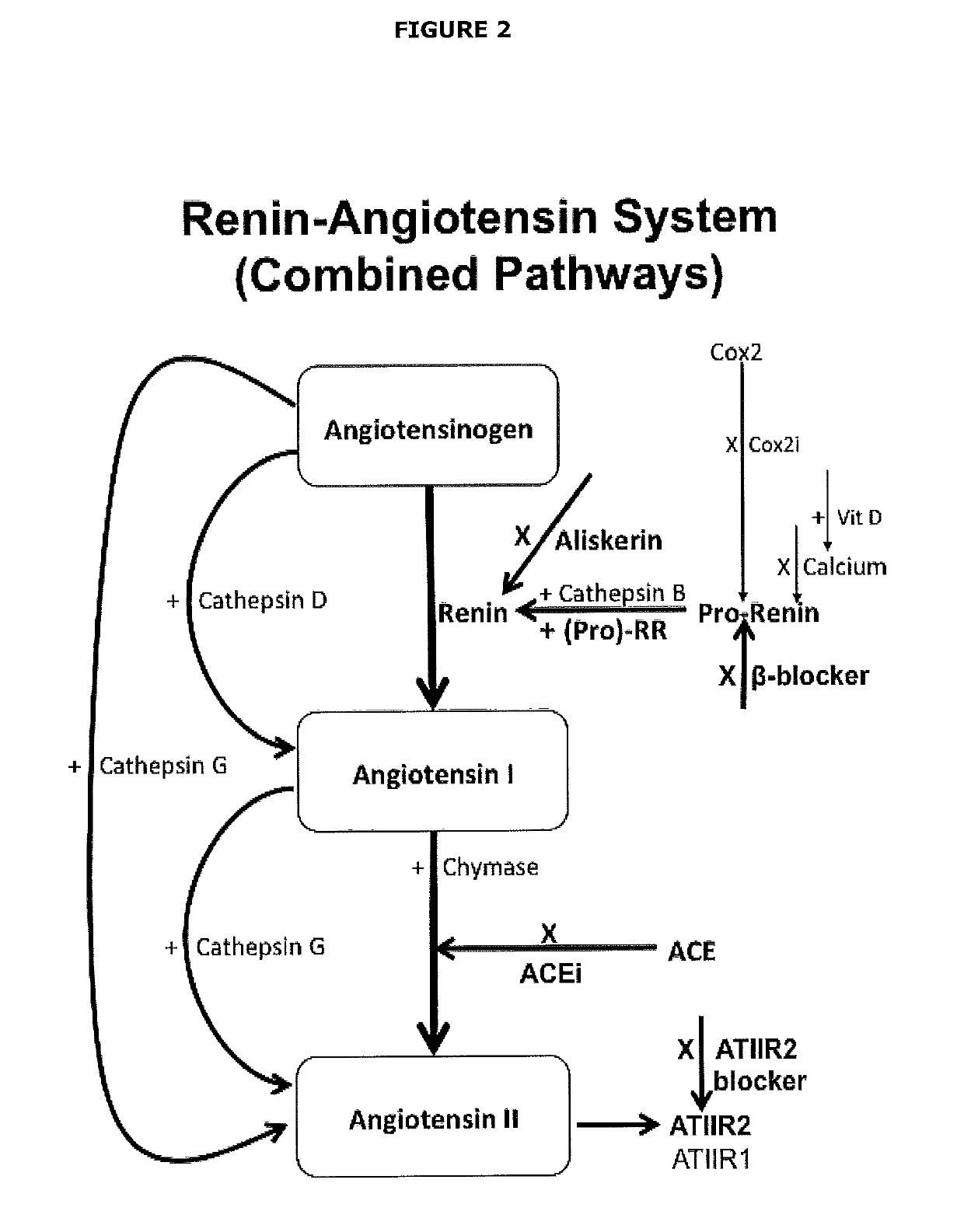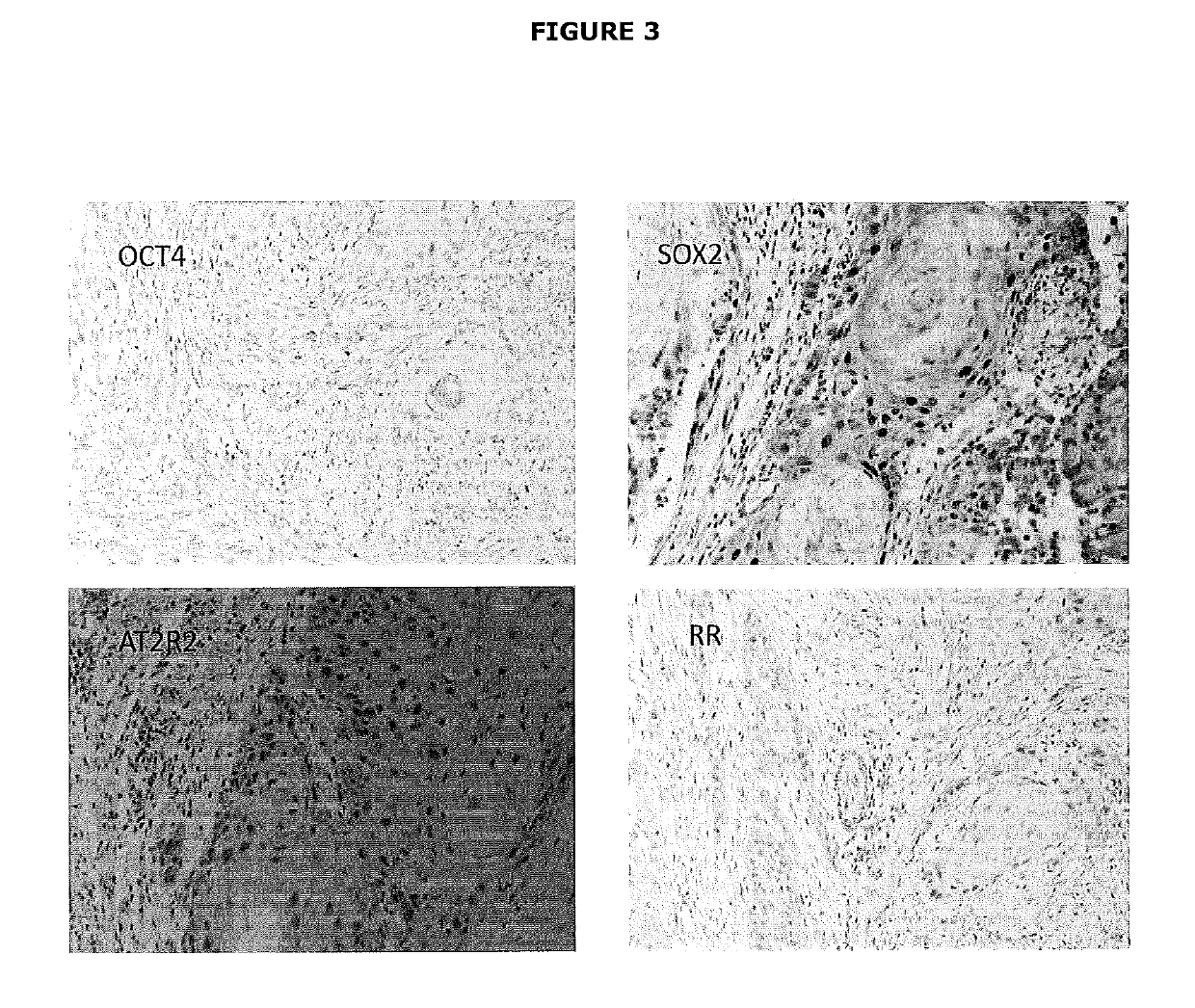Cancer diagnosis and therapy
a cancer diagnosis and cancer technology, applied in the field of cancer diagnosis and cancer therapy, can solve the problems of limited overall survival benefit, toxic effect of cancer cells on cancer cells, and many limitations of therapies
- Summary
- Abstract
- Description
- Claims
- Application Information
AI Technical Summary
Benefits of technology
Problems solved by technology
Method used
Image
Examples
example 1
and Methods
Materials
Antibodies
[0235]The antibodies used for immunohistochemistry, their optimised dilutions and sources are listed in alphabetical order in Table 1.
[0236]
TABLE 1Antibodies, Dilution and SourcesOptimisedDilution -OptimisedOptimisedDABDilution -AntibodyAutostainerFluorescentDilution -ControlAntibodySpeciesSourceIHCIHCWBtissueSanta CruzRabbitNewcastle1:3001:200 SeminomaBiotechnologyupon Tyne,NanogUKAbcamRabbitBillerica,1:1000 1:1000PlacentaRenin ReceptorMa, USACell MarqueMouseSanta Cruz,1:300SeminomaOct-4MonoclonalCa, USAThermo FisherRabbitSanta Cruz,1:20001:500ColonScientificpolyclonalCalifornia,CancerSox2USALifeMouseRockford,1:5000UbiquitouslyTechnologiesmonoclonalIl, USAexpressedβ-actinAbcamGoat anti-Carlsbad,1:500SecondaryRabbitCa, USAantibodyAbcamSheep anti-Carlsbad,1:500SecondaryMouseCa, USAantibodyAbcamGoat anti-Carlsbad,1:2000SecondaryMouseCa, USAHRPconjugatedantibodyAbcamSheep anti-Carlsbad,SecondarygoatCa, USAHRPconjugatedantibodyAbcamGoat anti-Carlsbad,1:2000...
example 2
n Analysis in Squamous Cell Carcinoma of Oral Cavity
[0274]The following markers were analysed in tissue samples obtained from patients having squamous cell carcinoma of oral tongue (SCCOT).
1. Embryonic Stem Cell Markers
[0275]OCT4: Embryonic stem cell marker, associated with maintenance of pluripotency and self-renewal, not expressed in normal adult tissues. Transcription factor with expression normally confined to the nucleus although some cytoplasmic expression in cancer cells has been noted in the literature (also noted in our results).
[0276]NANOG: Embryonic stem cell marker, associated with maintenance of pluripotency and self-renewal, expression controlled by SOX2 and OCT4. Transcription factor with expression normally confined to nucleus, but again some cytoplasmic expression in cancer cells has been noted in the literature (also noted in our results).
[0277]SOX2: Embryonic stem cell marker, associated with maintenance of pluripotency and self-renewal. Transcription factor with ...
example 3
n Analysis Other Cancers
[0287]To perform co-expression studies for the expression of the embryonic stem cell marker, OCT4, and Renin Receptor, paraffin sections were stained sequentially for the presence of the two proteins. The images were captured using the Olympus FV-1200 Confocal Microscope and analysed using the Olympus Fluoview FV1000 software. A representative cancer stem cell from each of the cancer systems examined were selected and a cross-sectional line drawn through the middle of it, with the relative expression levels of OCT4, the Renin Receptor relative to the cell nucleus, shown by the expression of 4′,6-diamidino-2-phenylindole (DAPI). This evident from the data in the accompanying figures by cancer type, namely: OTSCC (FIGS. 4A, 4B), melanoma (FIGS. 7A, 7B), sarcoma (FIGS. 9A, 9B), bowel cancer (FIGS. 11A, 11B), brain cancer (FIGS. 13A, 13B), breast cancer (FIGS. 15A, 15B), lung cancer (FIGS. 17A, 17B), B cell lymphoma (FIGS. 19A, 19B), and kidney (FIGS. 21A, 21B), ...
PUM
| Property | Measurement | Unit |
|---|---|---|
| temperature | aaaaa | aaaaa |
| voltage | aaaaa | aaaaa |
| voltage | aaaaa | aaaaa |
Abstract
Description
Claims
Application Information
 Login to View More
Login to View More - R&D
- Intellectual Property
- Life Sciences
- Materials
- Tech Scout
- Unparalleled Data Quality
- Higher Quality Content
- 60% Fewer Hallucinations
Browse by: Latest US Patents, China's latest patents, Technical Efficacy Thesaurus, Application Domain, Technology Topic, Popular Technical Reports.
© 2025 PatSnap. All rights reserved.Legal|Privacy policy|Modern Slavery Act Transparency Statement|Sitemap|About US| Contact US: help@patsnap.com



